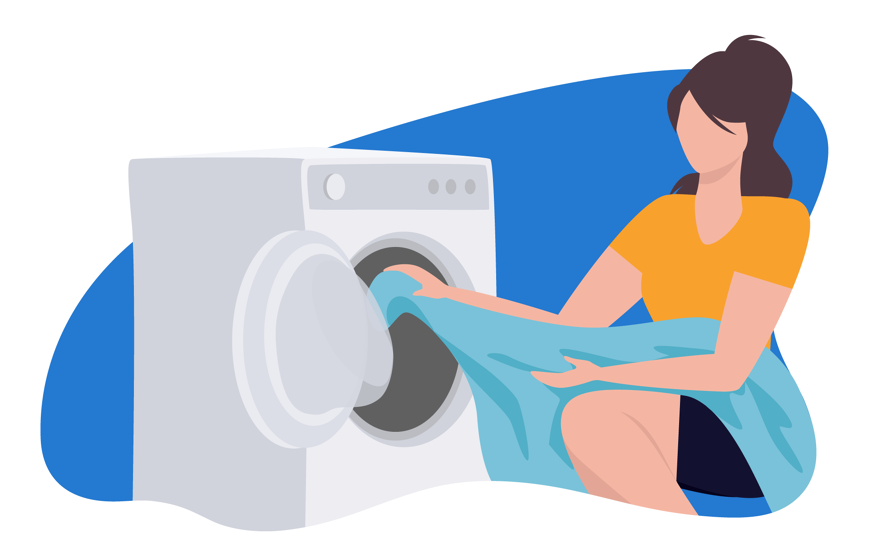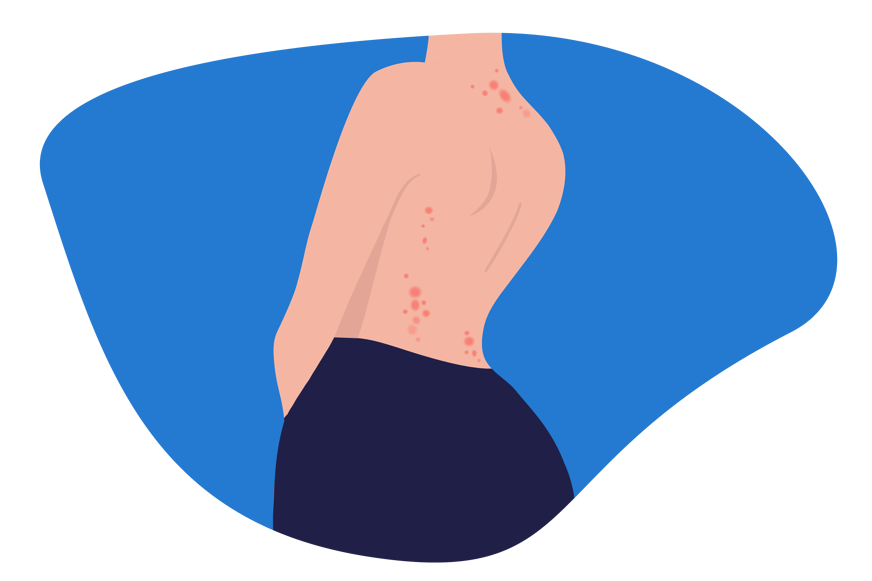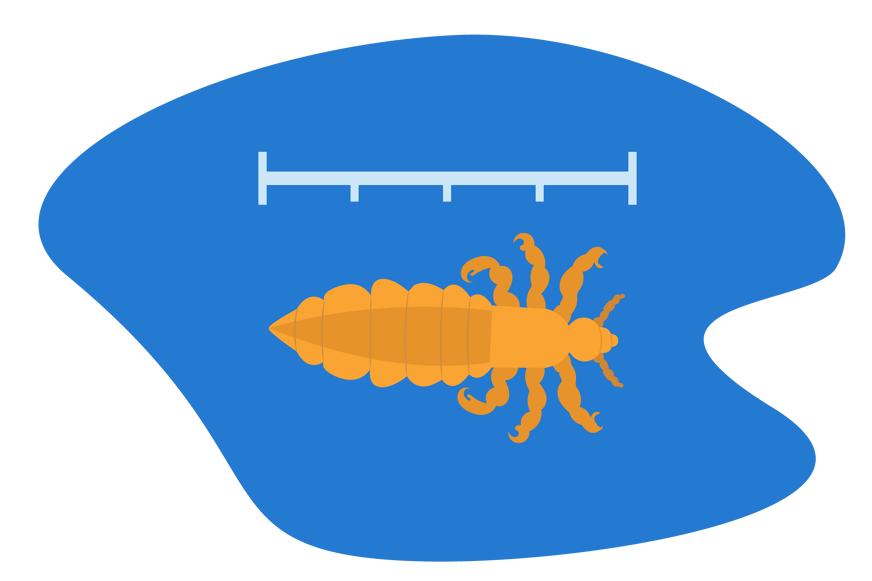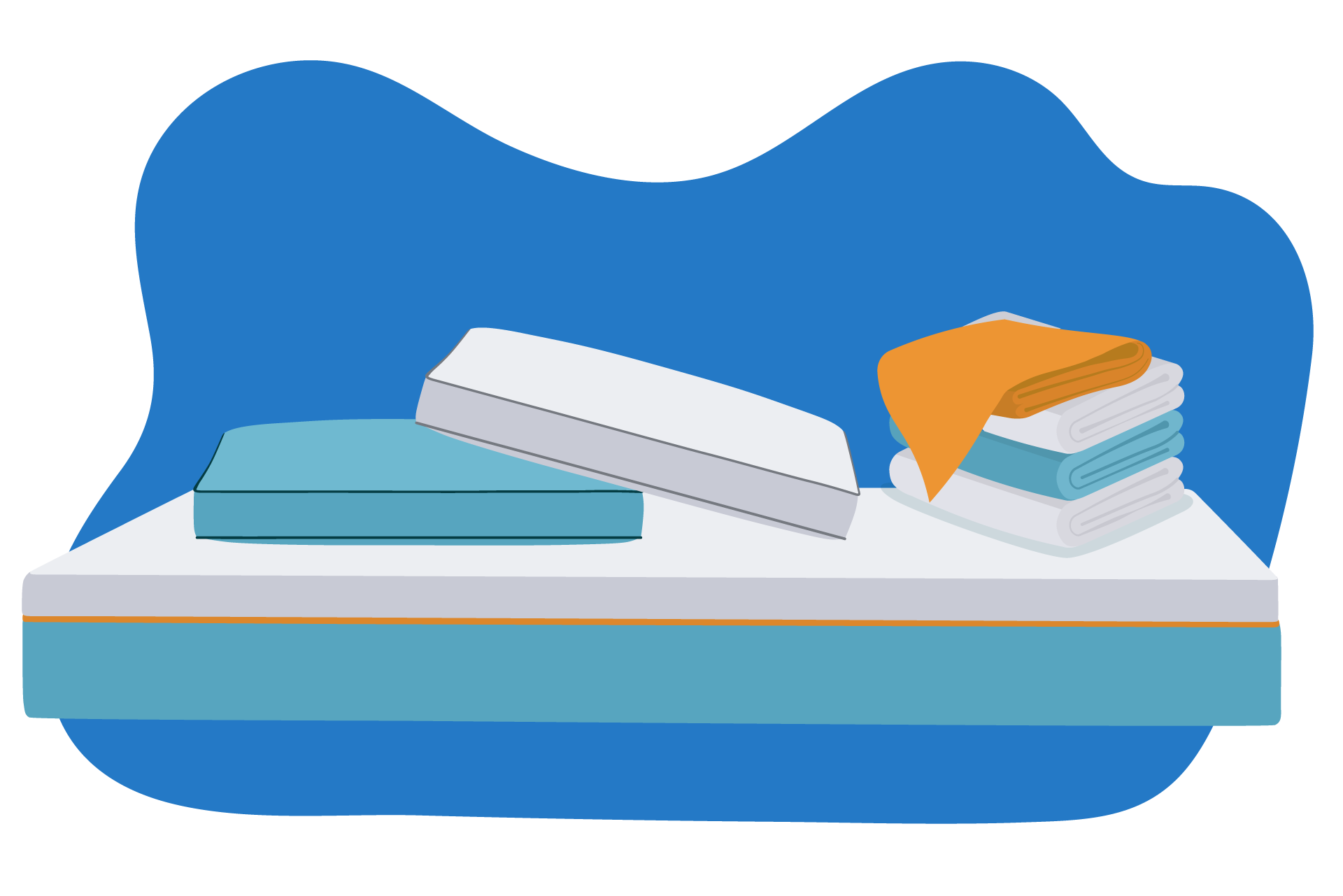How to get rid of dust mites
Let's explore the effective dust mite treatment measures you can start implementing today.
Wash bedding regularly
It’s crucial to wash your bedding at high temperatures as regularly as possible. 🌡️

We recommend washing bedding at least weekly or every two weeks to kill house dust mites and effectively remove allergens.
Washing your kid’s soft toys every few months or giving them a chilly timeout in the freezer can also help tackle those pesky mites.
You should also replace your bedding and pillowcases with new ones every year or so.
We’ll explore the best bedding options for keeping dust mites at bay a bit further down.
Reduce humidity in the home
Keeping humidity levels low, ideally below 50%, is key in making your home less inviting to mites.
Ensure proper ventilation, especially after activities like cooking or showering, to ward off excessive moisture.
Drying clothes outdoors and letting bedding air out before making the bed can help to reduce moisture. 🌬️

You can also invest in a dehumidifier or an air cooler to help create a drier, dust mite-resistant environment.
Vacuum regularly
A thorough vacuuming routine is crucial in the fight against house dust mites. ⚔️
Targeting carpets, floors, and soft furnishings at least once a week prevents these areas from becoming dust mite havens.
You should also ensure that the vacuum filter or dust bag is clean, to remove any dust mites that may have accumulated inside.
Vacuuming mattresses every two weeks can make a significant difference in reducing dust mite populations, leading to a cleaner and more allergen-free bedroom environment. ✨

Consider upgrading to a vacuum cleaner with a high-efficiency particulate air (HEPA) filter for an enhanced cleaning experience.
Remove dust
Regular dusting and polishing of surfaces ensure that your home stays welcoming and minimises allergens that can affect your well-being.
Begin with the basics by wiping and polishing surfaces regularly to keep dust at bay.
Paying special attention to areas that often get overlooked can also make a big difference. 🔍

Ornaments and decorative items, while they add character to your space, can also be magnets for dust.
Consider reducing the number of these items or ensuring they are cleaned regularly.
Use allergy-friendly bedding
Invest in a good quality mattress protector and opt for allergen-proof bedding to create a barrier against dust mites. 🛡️

Look for duvet covers and pillowcases with zippers to prevent dust mites from getting inside, and choose bedding that’s easy to toss in the wash.
Machine-washable duvets and pillows are a must for those who are sensitive to allergens.
If possible, upgrade to an anti-dust mite mattress or one with a machine-washable cover for that extra layer of protection.
Our favourite anti-dust mite mattresses:
What are dust mites?
Dust mites are tiny, insect-like pests that make themselves at home in the cosy nooks and crannies of your house dust. 💨
They are so small at just a quarter of a millimetre long that they are completely invisible to the naked eye.
Despite their minuscule size, dust mites play a significant role in the ecosystem of our indoor environments.
For the majority, these tiny tenants are harmless, quietly coexisting without causing any disturbance. 🤫
Are dust mites harmful?
However, for some individuals, dust mites can become a bigger problem.
Asthma affects around 5.4 million [1] people in the UK.
Allergic and asthmatic symptoms can arise from breathing in allergens found in the dust mites' droppings, making these invisible house guests from benign to bothersome.

Symptoms include sneezing and having a runny or itchy nose, throat or mouth. 🤧
These allergy symptoms are often worsened from a home infested with dust mites.
Understanding the nature of dust mites and how to prevent them is the first step towards creating a healthier home environment, especially for those sensitive to these allergens.
How do you know if you have dust mites in the home?
Wondering if dust mites are sharing your space?
Dust mite allergy symptoms include sneezing, a runny or stuffy nose, and itchy, watery eyes.
You might also find yourself coughing or wheezing, which is especially noticeable right after you wake up.
Moreover, skin reactions, such as redness and itching, can flare up if you come into direct contact with dust mites or their waste particles.

These reactions are your body's way of telling you that dust mite allergens might be lurking in your bedding or elsewhere in your home.
Can you see dust mites?
Dust mites are completely invisible to the naked eye.
Regarding their size, adult female dust mites measure about 500 microns (0.05 mm or 0.002 inches) long.

While we can't physically see them, the symptoms mentioned above may indicate a dust mite infestation.
Where do dust mites come from?
Dust mites are a natural part of our indoor environment, quietly setting up camp in our homes without an invitation.
These tiny creatures thrive best in warm, humid environments—conditions that many of our homes naturally provide.
The reason they choose to dwell with us is quite straightforward: dust mites feed on dead skin cells, which humans shed regularly.
This diet leads them to places where skin cells tend to accumulate, such as in bedding, upholstered furniture, and carpets.

These areas offer dust mites not only a plentiful food supply but also the warm and moist environment they adore.
So, can you get rid of dust mites?
Yes, you can get rid of dust mites in your home.
Regular cleaning and maintaining low humidity in rooms where dust mites are likely to accumulate is key.
Don't let these tiny pests dictate your home's (and your) health and follow the tips in our article.
















Alternatively, message us directly via the Contact Us page.